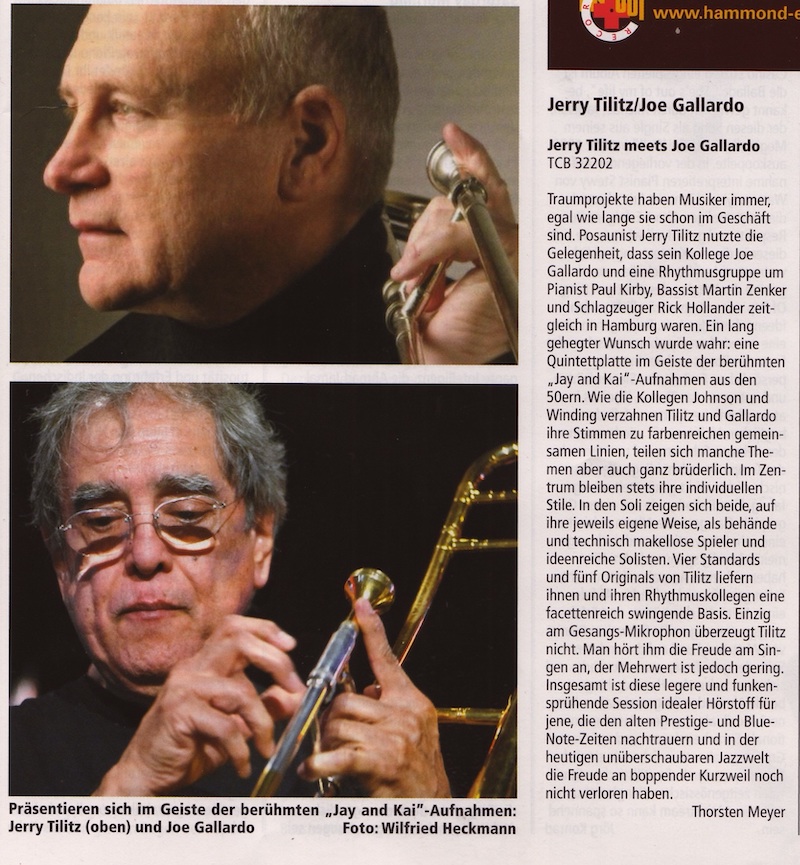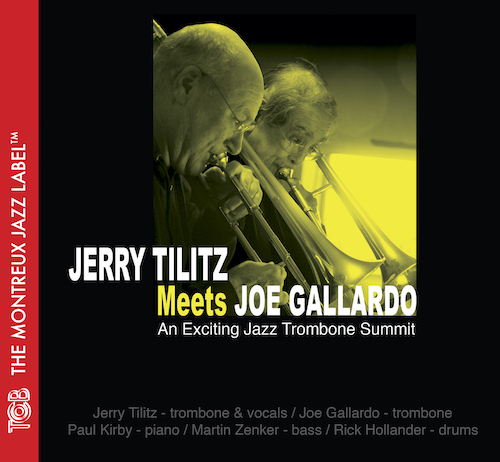reviews
Jerry Tilitz Review in Hamburger Morgenpost
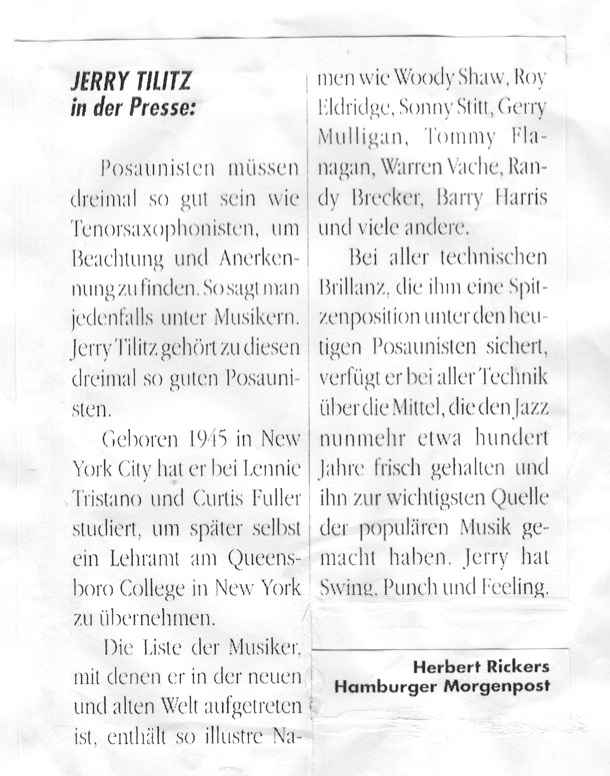
“Trombonists have to be three times as good as tenor saxophonists in order to receive attention and recognition or so they say among musicians. JerryTilitz is one of these trombonists who are three times as good.
Born in 1945 in New York City, he studied with Lennie Tristano and Curtis Fuller and later took up teaching at Queensboro College in New York. The list of musicians with whom he has performed in the new and old world includes such illustrious names as Woody Shaw, Roy Eldridge, Gerry Mulligan, Tommy Flanagan, Warren Vache, Benny Golson and many others. Despite all his technical brilliance, which ensures him a leading position among today’s trombonists, he still has the tools at his disposal that have kept jazz fresh for around a hundred years and made it the most important source of popular music. Jerry has swing, punch and feeling.”
Herbert Rickers
Hamburger Morgenpost
“The NY TAPES” REVIEW IN JAZZ THING MAGAZINE
Jazz Thing
Diese Aufnahmen, die der Posaunist Jerry Tilitz mit Kollegen aus der New Yorker Session-Szene eingespielt hat, haben rund 20 Jahre auf dem Buckel und klingen doch frischer und vitaler als viele aktuelle Einspielungen, die die Studios sonst so verlassen. Tilitz fackelt nicht lange und legt seinen Kompositionen überwiegend stramme Uptempos zugrunde, die ihm und illustren Musikern wie Trompeter Tom Harrell, Saxofonist Arnie Lawrence, den Pianisten Harold Danko und Jim McNeely sowie Billy Hart und Bob Moses am Schlagzeug genügend Raum zu intensivem Austoben und behendem Improvisieren bieten. Aber nicht nur deshalb ist es ein Glücksfall, dass diese Aufnahmen nun ans Ohr der Öffentlichkeit dringen. Denn neben dem No-Name-Musiker Jerry Tilitz, der sich auch als Arrangeur mit einem Händchen fürs Unkonventiolle profiliert, gibt’s weitere Überraschungen zu entdecken. Zum Beispiel einen Saxofonisten namens Bob Kindred, der mit widerborstigen Phrasen brilliert. Oder die Posaune als duofähiges Instrument und den alten Ellington-Gassenhauer “It Don’t Mean A Thing” als forsche Uptempo-Nummer im kauzigen Blechbläser-Kleid.
———-
Jazz Thing
These recordings, which trombonist Jerry Tilitz made with colleagues from the New York session scene, are around 20 years old and yet sound fresher and more vital than many current recordings that otherwise leave the studios. Tilitz does not hesitate and bases his compositions on mostly up tempos, which give him and illustrious musicians such as trumpeter Tom Harrell, saxophonist Arnie Lawrence, pianists Harold Danko and Jim McNeely as well as Billy Hart and Bob Moses on drums enough space to intensely let off steam with quick improvisations. But that is not the only reason why it’s a stroke of luck that these recordings are now reaching the public’s ear. Jerry Tilitz distinguishes himself as an arranger with a knack for the unconventional and there are other surprises to discover. For example saxophonist Bob Kindred shines with unconventional phrasing. Likewise the trombone as a duo-capable instrument and the old Ellington hit song “It Don’t Mean A Thing” as a brisk up-tempo number dressed in a strange brass attire.
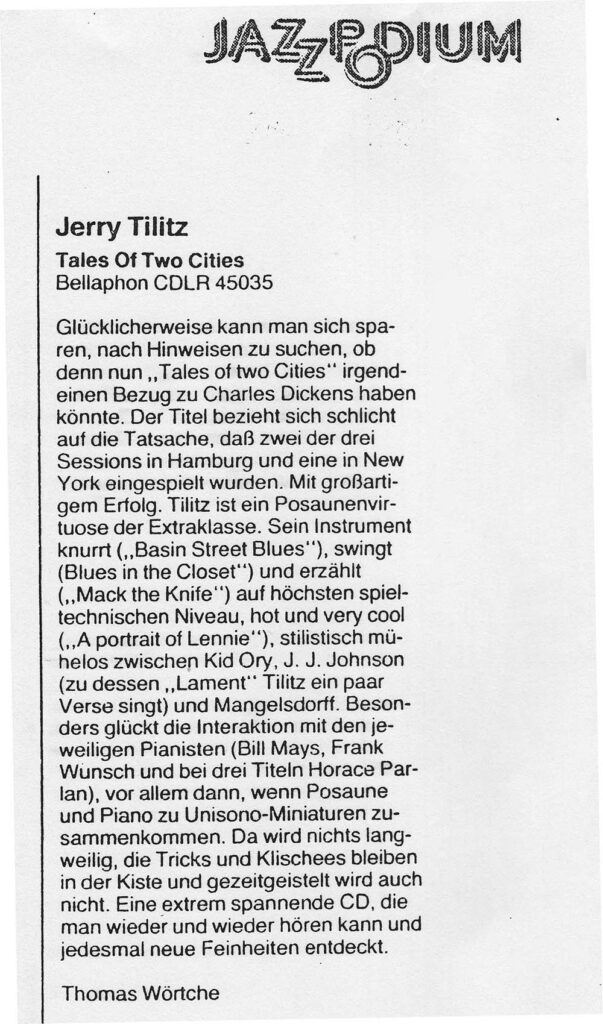
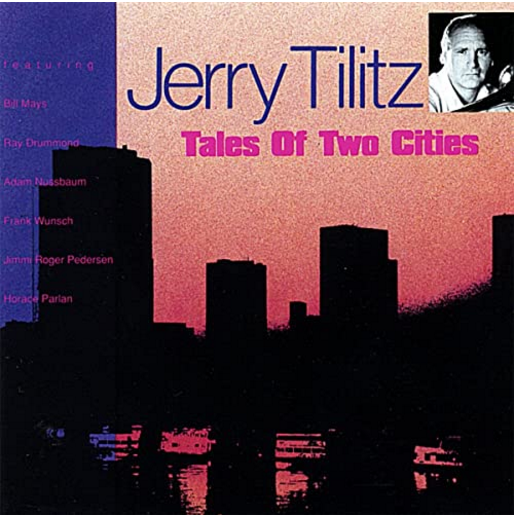
CADENCE MAGAZINE (NEW YORK. USA) REVEIW OF “THE NY TAPES”
— David DuPont
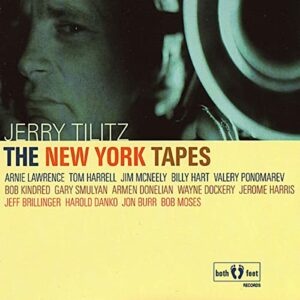 JERRY TILITZ,
JERRY TILITZ,
THE NEW YORK TAPES
BOTHFEET 1001
Bankrupt/Calamity Anne/A Conversation/Pathological/Nancy’s Chocolate/It Don’t Mean A Thing (If It Ain’t Got That Swing)/Fifth World Blues/Bluefish Avenue/Flatbush Serenade. 57.48
These sessions all celebrate the New York scene. That place, according to the reality-shaping myth, where all good players go to find out if they’re great. Because, after all, as Frank and Liza, not to mention a dozen singers who never got within shouting distance of the Big Apple, sang “if you can make it there, you can make it anywhere.” Of course there are those of us who feel that this myth of New York as the center of the Jazz universe is not only less true than it once was, but now poses a major barrier toward the further development of the music, but that’s a subject for another time.
Unlike New Orleans, New York lacks a distinctive beat that underpins music from Jazz to pop. Rather it seems the city reflects the rhythms imported to its boroughs with the huddled masses from overseas and domestic places like Pontiac. More than a distinctive beat, it seems there’s an edge to any beat adopted. That edge is one of the unifying elements of The New York Tapes. Though apparently recorded over at least a couple of years it has far more unity than the New York Connection tribute, in part because it is shaped by trombonist and composer Tilitz’s sensibility. Tilitz here celebrates the life of a jazz musician trying to ply his trade in New York City. The result is a collection of pieces by assorted ensembles that have an edgy consistency. They include a wide ranging trombone-soprano conversation, a tricked up version of Ellington’s “It Don’t Mean A Thing”, a calypso of the leader’s “Nancy’s Chocolate”, a reworking of “Body And Soul” that shows a bit of Tristano’s influence, contemporary bop -“Bankrupt” by Jim Mcneely, and “Pathological” and “Bluefish Avenue”, both by Tilitz. I especially like “Calamity Anne”, a good natured, highstepping urban march number. Throughout the leader gets some good performances from his sidemen, the powerful reedwork of Arnie Lawrence and Bob Kindred, names most often glanced in big band personnel listings, is especially notable. Tilitz himself blows loose-limbed out of J.J. horn that makes me wonder why I haven’t encountered him before (or why if I did I don’t remember).
Well, I have now and I am glad of it.
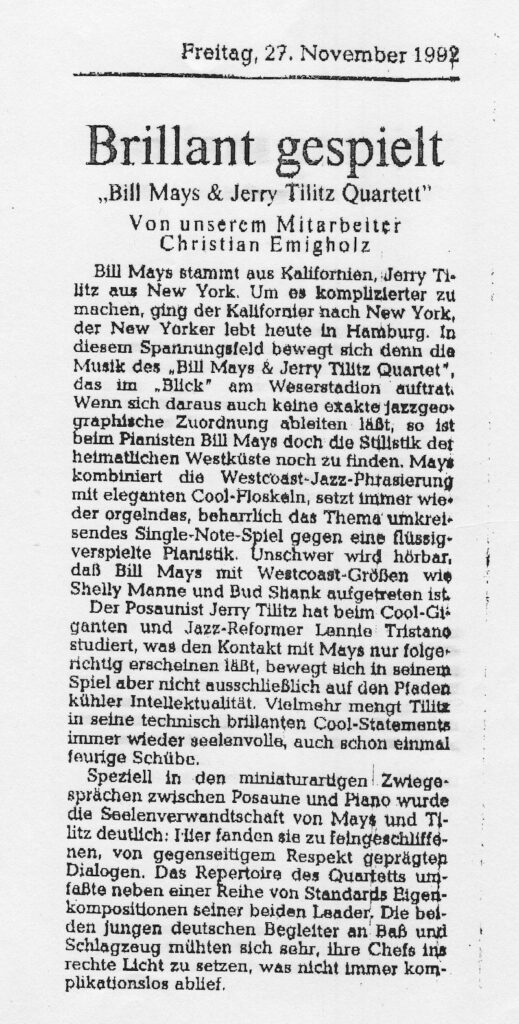
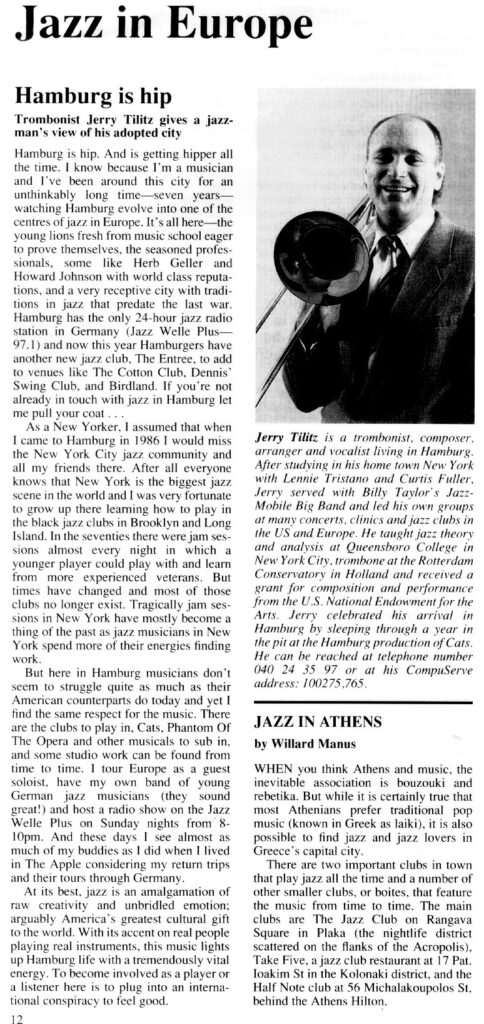
The Ralph Reichert/Jerry Tilitz Quartet – Back to Back
— by Joseph Taylor/soundstage.com
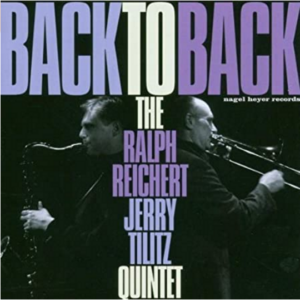 American trombone player and vocalist Jerry Tilitz lives in Hamburg and joins German tenor player Ralph Reichert and three other European musicians for Back to Back. The co-leaders were inspired to record together after an impromptu get together on stage and used the opportunity to pay tribute to a jazz classic they both admire: Stan Getz and J.J. Johnson at the Opera House. They revisit three songs from that recording and choose a few other tunes to interpret, including three by Tilitz.
American trombone player and vocalist Jerry Tilitz lives in Hamburg and joins German tenor player Ralph Reichert and three other European musicians for Back to Back. The co-leaders were inspired to record together after an impromptu get together on stage and used the opportunity to pay tribute to a jazz classic they both admire: Stan Getz and J.J. Johnson at the Opera House. They revisit three songs from that recording and choose a few other tunes to interpret, including three by Tilitz.
Tilitz is an imaginative player whose improvisations are filled with warmth and good humor. Reichert has an engaging melodic style that meshes well with that of Tilitz, especially on the latter’s own enjoyable compositions. Pianist Enno Dugnus provides strong harmonic support throughout. His solos are models of economy and taste. In fact, Back to Back has an abundance of taste when one wishes it would cut loose a little more. Drummer Bjorn Lucker and bassist Joachim Gerth are both capable players and they use their solo spots to good advantage, but they often seem to be holding back.
The liner notes say Back to Back was recorded live at Hamburg’s Birdland Jazzclub, but my guess is that it was not performed in front of an audience. The recording is enjoyably clean, with a pleasant hint of reverb, but it feels at times as if it was fussed over too much, hemming the musicians in. The two most enjoyable tracks feature Tilitz’s world-weary vocals. He could teach many younger crooners how to approach a lyric.
